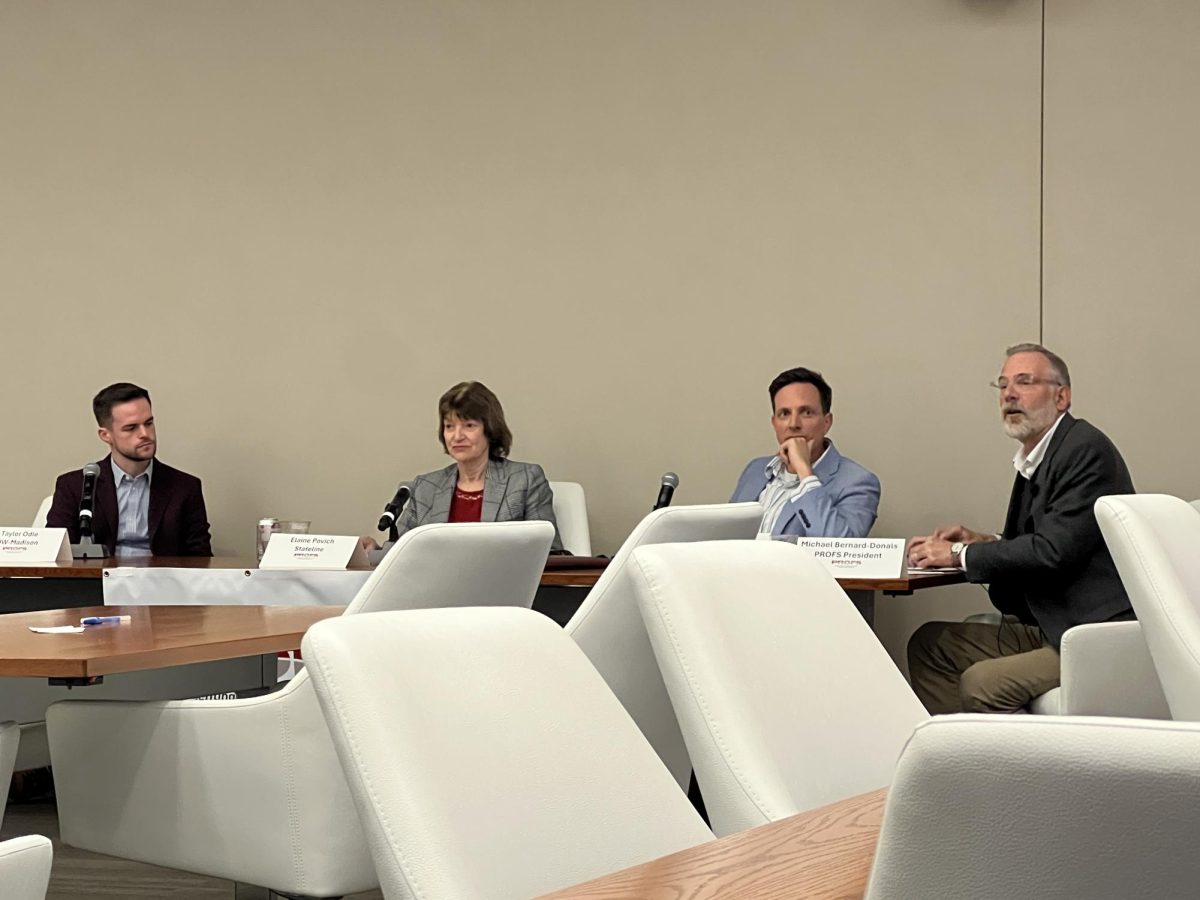The University of Wisconsin is scheduled to build a new chemistry building featuring more organic chemistry labs and rooms adjacent to laboratories where students can work with data.
With construction already underway, Judith Burstyn, a chemistry professor at UW, helped explain why a new facility is necessary and shed some light on the details of the building.
“Our instructional laboratories date to the 1960s, and the reality is that safety standards in chemistry and the physical facilities in chemistry have changed a lot since the 1960s,” Burstyn said. “You might imagine, our facilities are dramatically out of date.”
Burstyn said just over 55 percent of undergraduate students take some form of a chemistry course at UW, so the fact that the facilities are so out of date is a bit ironic.
Many majors require chemistry courses, such as biological sciences, nursing, pharmacy, pre-med and pre-vet. Degrees like agriculture and engineering, while not directly related to chemistry, can still require courses in the field, Burstyn said.
“It is just considered foundational … Our department actually has a reputation,” Burstyn said. “We are not only experts in chemistry research, but also in chemistry education, and we are teaching in profoundly inadequate facilities.”
Burstyn is most excited to see the new laboratories, though the new building will also have facilities for working with the data collected in these labs. Such rooms will be adjacent to, but physically separated from the laboratories and provide spaces for students to work with the data itself, Burstyn said.
Students will be able to take off their lab coats, goggles and gloves to work with the information they gather in a comfortable environment, Burstyn said.
“There is no space in our current facilities for students to work up the data in the laboratory or immediately after the laboratory,” Burstyn said. “If you ever have walked through our building … students would be literally sitting in the hallways with their lab notebooks working up their data because there is just no space for them to do that.”
Another key feature will be the active learning classroom, set to be the single largest classroom on campus, Burstyn said. The room — which anyone on campus will be able to use — will be designed for students to move around and work together, Burstyn said.
Burstyn also said one of the biggest pieces of the project is about safety and catching up to the modern university standards the current facilities have not adapted to.
“Laboratory safety is extremely important … students that come to this university should expect that they are being taught chemistry in a safe environment, and essentially we are as safe as we can be with the physical constraints that we have,” Burstyn said. “With the new facility, it will be much, much safer because it is designed for that safety.
Prof. Bob McMahon, another chemistry professor at UW, echoed similar sentiments about the safety situation both within the current building and the new one.
UW Regents approve budget requests for new construction projects, increased operating funds
McMahon made an example of the Daniels building, part of the existing chemistry building, in which the air ventilation is completely failing. With the construction of the new building, the ventilation will be replaced, allowing people to keep using the Daniels building, which has “huge implications for our research program,” McMahon said.
The construction will bring safety improvements both in the new and current building, McMahon said.
“In these two old buildings, what we call the Matthews Wing and the Daniels Wing, they don’t have fire sprinklers. If there is any building in Madison that you would hope would have fire sprinklers, it would be a chemistry laboratory,” McMahon said. “It is not exciting, but it is critically important.”
One big concern McMahon saw is that the current building cannot accommodate the sheer volume of students the chemistry department would hope to accommodate. Using Chemistry 344 as an example, McMahon said the course is intended to be taken mainly by sophomores but is usually taken mostly by juniors and seniors, as the younger students are unable to get the class before it fills up since the building is too small to fit everyone.
McMahon said one out of five students enrolled in Chemistry 344 do not even take the class at UW. Rather, they are forced to go to Madison College or another UW college campus because the university cannot accommodate them with its current facilities.
“We run labs from 7:45 in the morning to 10 at night, and we still cannot handle the student demand … that should not happen at the flagship institution,” McMahon said.





















